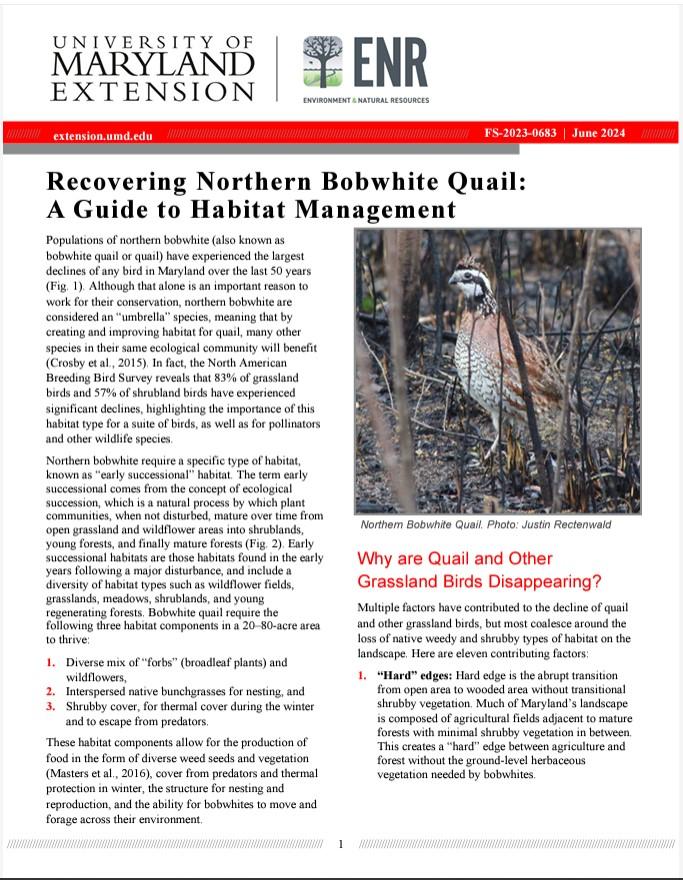I have the honor of having two roles for the University of Maryland. For more than ten years, I have worked for the Woodland Stewardship Education program, producing this newsletter, curating and adding content to the program’s website, and coordinating the two online courses we offer. (Details about them are available here and here.) That’s my morning job. For the past 2-plus years, I’ve spent my afternoons as the managing editor for publications across the University’s Extension program. It’s a fascinating exposure to the great work being accomplished statewide by folks in 4-H, horticulture, agriculture, emerging technologies, and much more. Occasionally, the two jobs intersect, such as recently when I worked with Extension Wildlife Management Specialist Luke Macaulay.
Luke is a frequent contributor to our roster of chat sessions for participants of “The Woods in Your Backyard” online course, sharing information about deer ecology and management. His new Extension publication, Recovering Northern Bobwhite Quail: A Guide to Habitat Management, looks at how woodland property owners and managers can work to restore current or create new habitat for this important species. As the publications editor, I often know little about the author’s subject (one of the first I had on my plate concerned a soybean pest). However, in Luke’s case, he covered a number of themes familiar to me from my morning job. It was an interesting convergence of the two.

His publication also reflects a growing trend in woodland management that understands that a mix of all ages of trees benefits both the forest and its inhabitants. Previously, forest managers were more interested in having woodlands of the same age. These “even-aged stands” were seen as being the best way to manage the forests, especially for timber. Nowadays, many professionals advocate for “uneven-aged stands” that include open areas that provide vital habitat for grassland birds and other wildlife. It’s this mix of new and old - of younger trees (or no trees) and older trees - that seem to best mimic environments that existed before human interventions altered the ecosystems. These modern forests are now called “sustainable,” and as you’ll read in the News and Notes section, Maryland’s state forests were recently recognized as such. State Forester Anne Hairston-Strang noted the need for a mix of young and old, saying, “We see it as building resiliency in our forests.”
Consider building the same resiliency in your own woodlands, even if it’s something as small-scale as encouraging younger trees in the undergrowth through chosen tree management or creating some grassland habitat. (More ideas here.) The mix of young and old will help the ecosystems into the future.